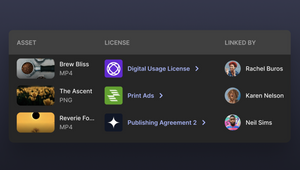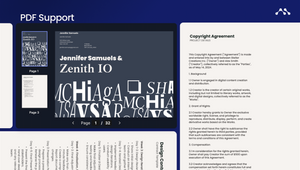
The Universal Problems with Content (And How They Can Be Solved)

Discover solutions for 2024 with MedialakeAI’s asset intelligence approach with David Granger (cinch and Red Bull), member of the MedialakeAI Advisory Board.
I’ve been lucky. I’ve worked in content marketing for nearly two decades. In that time much has changed: ease of production, ease of publication, ease of interaction with clients and customers. One thing which hasn’t (so far) been solved is the problems faced once content has been created. From sending CD-Roms via courier to collaborating over cloud storage, keeping track of what was made, by whom, and where-the-hell-it-is-now? have remained
Here are the biggest thieves of time and money which should all aim to eliminate in 2024:
1. Disparate Teams, Disparate Brand Measures
Anyone who’s worked in a successful organisation recognises and understands that consistency of branding is vital. The old adage – whose genesis comes from the 1930s film industry – states a consumer will need to see at least seven message points before they make a decision. Like going into a cinema. Fast forward just under a century and while the principle remains the same, the opportunity to reach customers has exponentially exploded. As have the problems.
If you’re going to reach a customer on social, via a TV ad, though digital PR, on your website, on someone else’s website, on a Google ad or via a content creator then your branding needs to be consistent. Customers, clients and audiences need to see the same logo, typeface and Pantone used as any prior interaction. Those of us who have worked with great brand teams know their adherence to brand guidelines verges on the authoritarian – and it’s with good reason. At multi-national level this is even more important. I’ve seen markets interpret logos, colours, and even taglines, to suit the promotional space or country. With geographical and channel proliferation, everyone needs to be as zealous about policing branding as the brand team themselves.
Content Lost = Time Lost (And budget. And resources)
Twice now I have arrived at a company to discover precious produced and paid-for content residing on piles of hard drives. These were not small-time start-ups, but there was little knowledge about how to store, catalogue or track content produced.
Bringing (at least some) marketing production in-house makes sense for companies of any size, but with that new-found creative freedom comes a degree of responsibility. It’s no good relying on the social media manager, the creative director or the intern remembering which 6TB SanDisk the final ad’s brand assets were stored. It works interdepartmentally as well. I’ve seen the Comms teams have separate digital asset management (DAM) to the Marketing team – neither cross-referencing what has been produced or where it’s kept. And, once the stopwatch starts on the hunt for the final version of an asset, it’s not only costing your teams time, it’s costing you money.
While not every department should be forced to use the same storage system, those systems at the very least should be speaking to each other. Even if the teams aren’t.
Stopping outdated, legally dodgy content remaining available
The above situations can be costly, frustrating, and time-consuming. However, they pale in comparison to the headaches which rights-management has the potential to induce. Keeping track of talents’ contracts, image rights, location agreements and production management papers, is a whole new litigious ball game. I remember one marketing campaign which didn’t keep track of assets featuring one particular talent. When said model saw their image still being used on point-of-sale after their contract expired, it proved pretty costly. In both budget and embarrassment for the in-house team. You need to know where your assets are and ensure they’re not used by a creative who requires the look and feel, but not the legal limitations, of an asset.
What the team at MedialakeAI has done is look at the storage and content management pitfalls and introduced clarity, order, and efficiency. Using MedialakeAI gives everyone oversight of what has been produced, and where it resides, and ensures it is only used when it can and should be.
There’s a good reason why we call it asset intelligence.
If you are interested in finding out more about Medialake, get in touch for an introductory call.












